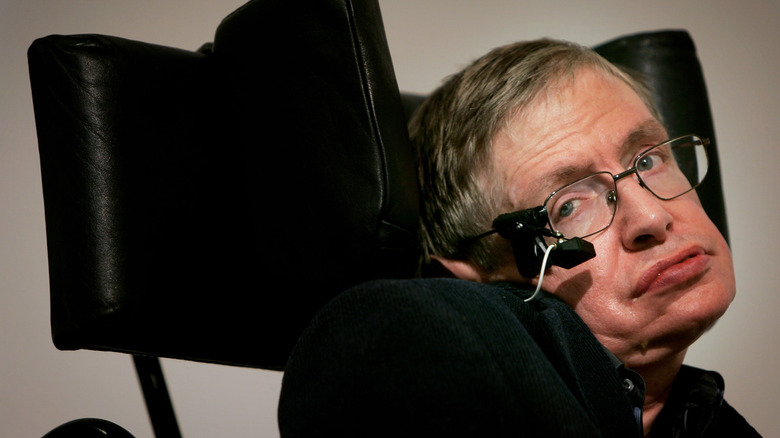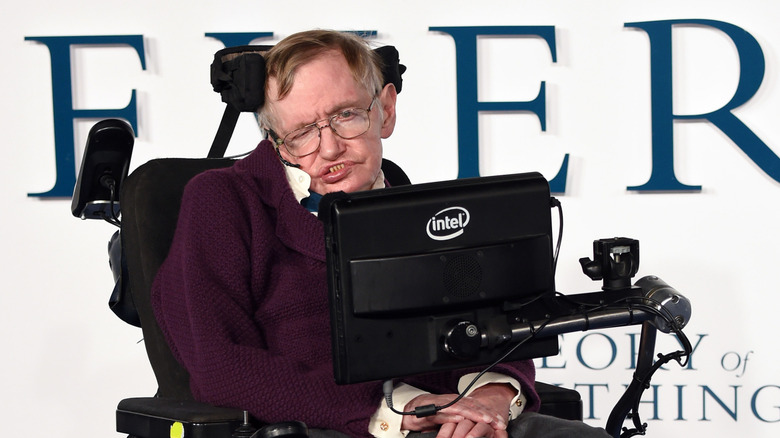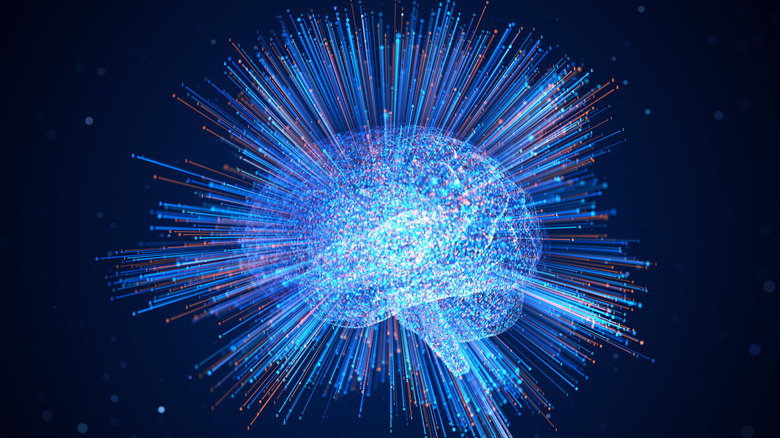Here's How Stephen Hawking Was Able To Talk Using AI
Stephen Hawking was 21 when he first noticed he had, to his mind, become clumsy. "It became clear that something was not quite right, and I was somewhat disgruntled to be told by a doctor at the time to lay off the beer," he recalled in his book, "Brief Answers to the Big Questions." It wasn't the effects of too many beers, but amyotrophic lateral sclerosis (ALS), a neurodegenerative disease. ALS slowly took away his ability to walk, use his arms, and eventually to speak, but left his mind fully able to delve into physics and cosmology to become a world-renowned scientist who advanced human knowledge in the realm of black holes and other phenomena.
Doctors initially only gave Hawking a few years to live. Instead, he lived to be 76, although he had to rely on technology, including artificial intelligence, to continue communicating with the world as his disease progressed. By 2014, Hawking was using a basic form of AI to help him use a computer system to speak, surf the web, write, and more.
Hawking's cheek muscle, a computer, and AI
As Stephen Hawking's ALS progressed, he became unable to use his finger to navigate the computer system he relied on to communicate, especially after losing his ability to speak in 1985. He became even more reliant on technology. By the time of Hawking's death in 2018, he was using a computer system that included a computer program developed by Intel called ACAT that relied on a single muscle in his cheek to operate. A cursor would automatically scan across his keyboard by row or column, with Hawking then selecting a character by twitching his cheek. An infrared sensor on his glasses would detect the movement.
Intel worked with Hawking for years to improve the program, which the company released as open-source software for others to use for free. By 2016, ACAT included a basic type of AI in the form of predictive text (like in smartphones) to slash the time it took Hawking to complete tasks on his computer. Things that had taken as long as four minutes to finish, he could do in about 10 seconds. The U.K. company Swiftkey worked with Intel and Hawking on the predictive AI used in the system. The algorithm relied on Hawking's previous lectures and books to help it predict the words the professor wanted to type.
Hawking's views on AI
Stephen Hawking used a form of artificial intelligence to help him interface with the outside world — including speeding up his text to talk time, allowing him to speak conversationally during his many interviews. But that didn't stop him from warning the world about the possible downsides of AI, which, he believed could even lead to the end of the world. "The development of full artificial intelligence could spell the end of the human race," he told the BBC in 2014. "It would take off on its own, and re-design itself at an ever increasing rate," he later explained. Even so, Hawking believed that the AI that had been developed at the time was useful.
He believed that more research was needed into both AI's positive uses and potential pitfalls if left unchecked. For Hawking, unable to speak or use a computer without the help of technology, including AI, his own experience likely helped him have a more nuanced understanding of the technology than the average person. Time will tell if he was right.


